Abstract
Aeromonas hydrophila 495A2 excreted two forms of amonabactin, a new phenolate siderophore composed of 2,3-dihydroxybenzoic acid, lysine, glycine, and either tryptophan (amonabactin T) or phenylalanine (amonabactin P). Supplementing cultures with L-tryptophan (0.3 mM) caused exclusive synthesis of amonabactin T, whereas supplements of L-phenylalanine (0.3 to 30 mM) gave predominant production of amonabactin P. The two forms of amonabactin were separately purified by a combination of production and polyamide column chromatographic methods. Both forms were biologically active, stimulating growth in iron-deficient medium of an amonabactin-negative mutant. Of 43 additional siderophore-producing isolates of the Aeromonas species that were tested, 76% (19 of 25) of the A. hydrophila isolates were amonabactin positive, whereas only 19% (3 of 16) of the A. sobria isolates and all (3 of 3) of the A. caviae isolates produced amonabactin, suggesting a predominant synthesis of amonabactin in certain Aeromonas species.
Full text
PDF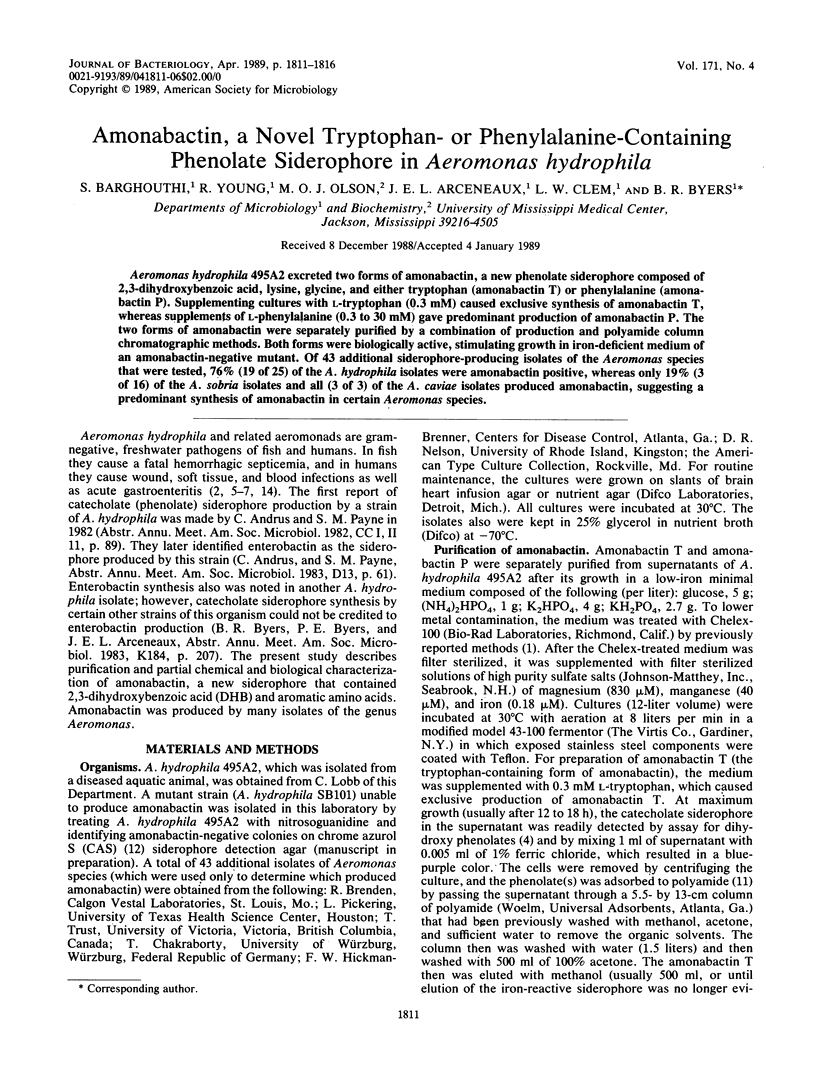
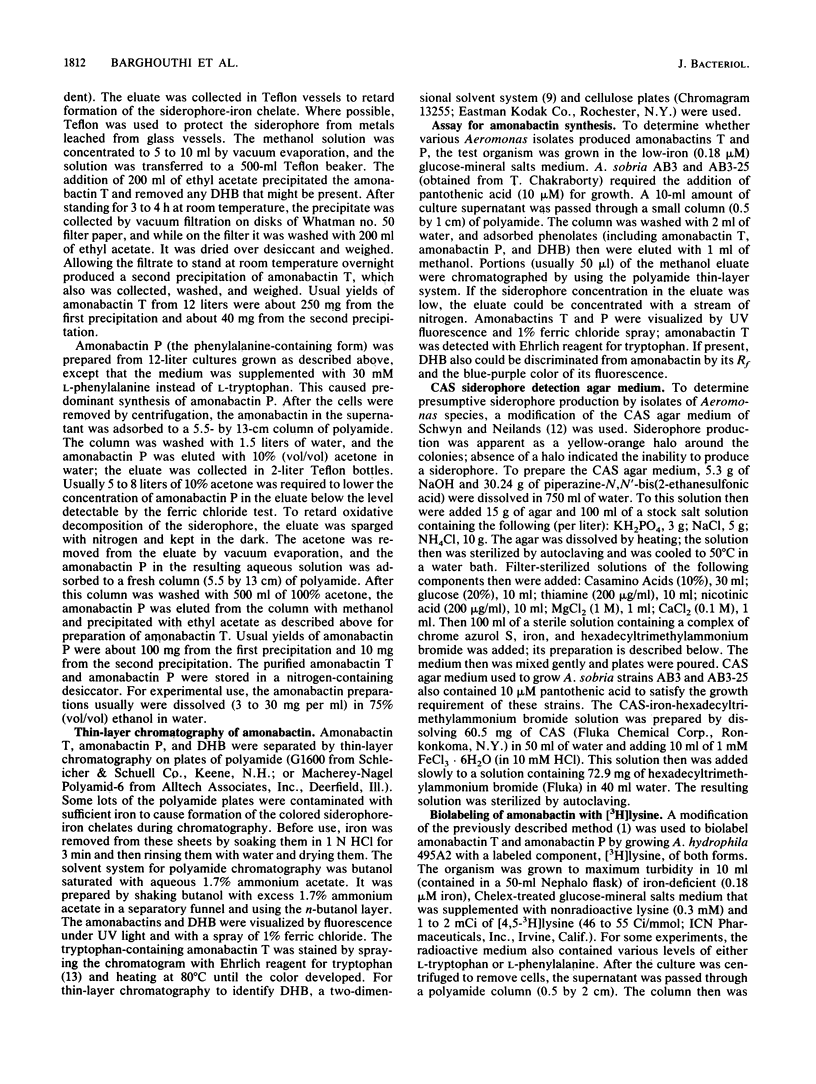
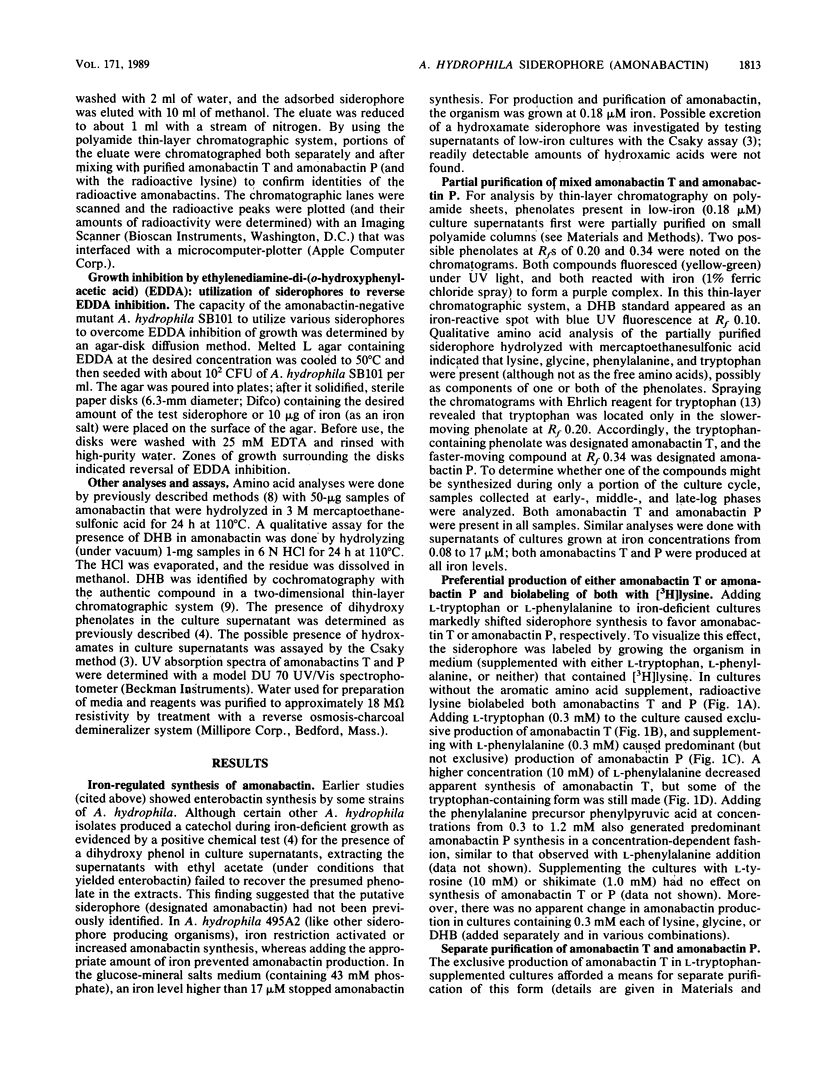
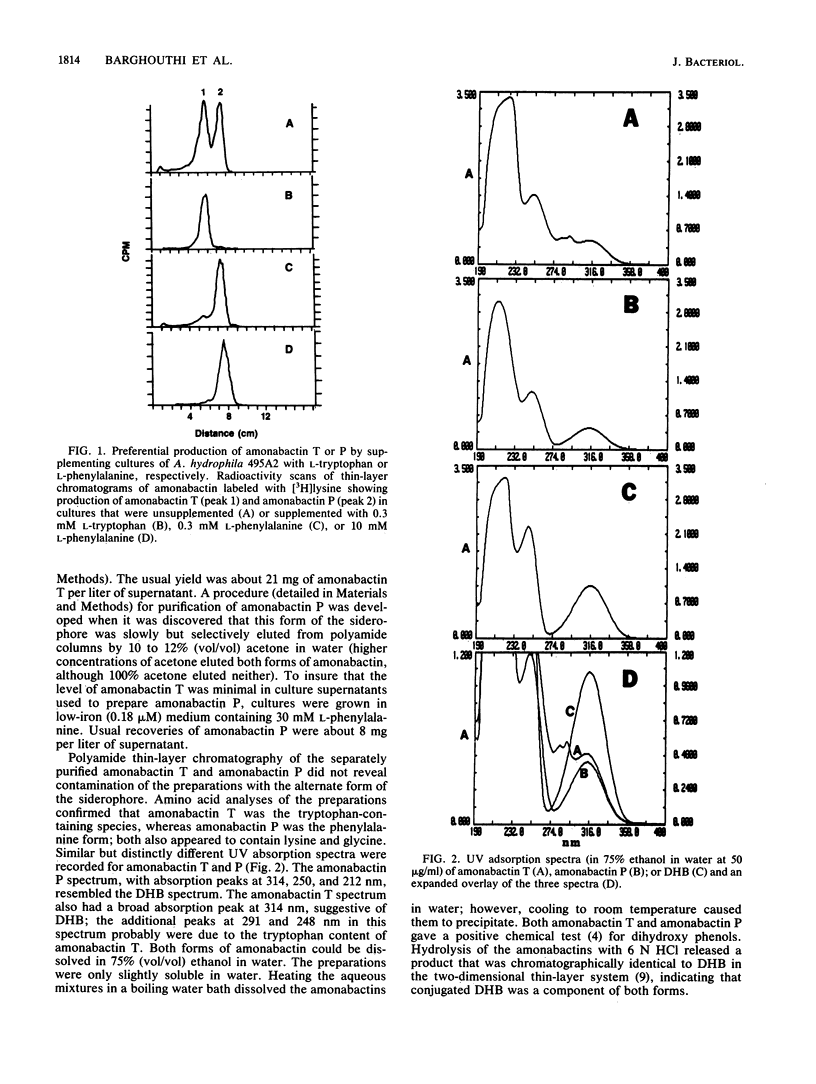

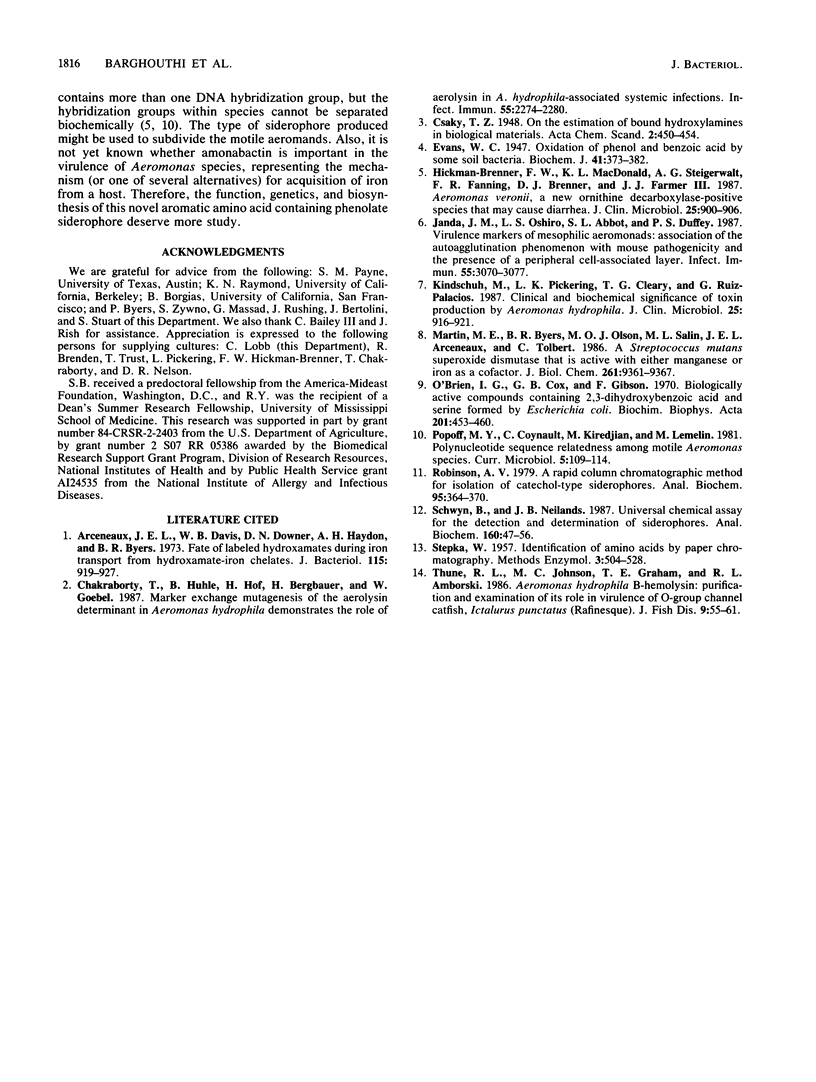
Selected References
These references are in PubMed. This may not be the complete list of references from this article.
- Arceneaux J. E., Davis W. B., Downer D. N., Haydon A. H., Byers B. R. Fate of labeled hydroxamates during iron transport from hydroxamate-ion chelates. J Bacteriol. 1973 Sep;115(3):919–927. doi: 10.1128/jb.115.3.919-927.1973. [DOI] [PMC free article] [PubMed] [Google Scholar]
- Chakraborty T., Huhle B., Hof H., Bergbauer H., Goebel W. Marker exchange mutagenesis of the aerolysin determinant in Aeromonas hydrophila demonstrates the role of aerolysin in A. hydrophila-associated systemic infections. Infect Immun. 1987 Sep;55(9):2274–2280. doi: 10.1128/iai.55.9.2274-2280.1987. [DOI] [PMC free article] [PubMed] [Google Scholar]
- Evans W. C. Oxidation of phenol and benzoic acid by some soil bacteria. Biochem J. 1947;41(3):373–382. doi: 10.1042/bj0410373. [DOI] [PMC free article] [PubMed] [Google Scholar]
- Hickman-Brenner F. W., MacDonald K. L., Steigerwalt A. G., Fanning G. R., Brenner D. J., Farmer J. J., 3rd Aeromonas veronii, a new ornithine decarboxylase-positive species that may cause diarrhea. J Clin Microbiol. 1987 May;25(5):900–906. doi: 10.1128/jcm.25.5.900-906.1987. [DOI] [PMC free article] [PubMed] [Google Scholar]
- Janda J. M., Oshiro L. S., Abbott S. L., Duffey P. S. Virulence markers of mesophilic aeromonads: association of the autoagglutination phenomenon with mouse pathogenicity and the presence of a peripheral cell-associated layer. Infect Immun. 1987 Dec;55(12):3070–3077. doi: 10.1128/iai.55.12.3070-3077.1987. [DOI] [PMC free article] [PubMed] [Google Scholar]
- Kindschuh M., Pickering L. K., Cleary T. G., Ruiz-Palacios G. Clinical and biochemical significance of toxin production by Aeromonas hydrophila. J Clin Microbiol. 1987 May;25(5):916–921. doi: 10.1128/jcm.25.5.916-921.1987. [DOI] [PMC free article] [PubMed] [Google Scholar]
- Martin M. E., Byers B. R., Olson M. O., Salin M. L., Arceneaux J. E., Tolbert C. A Streptococcus mutans superoxide dismutase that is active with either manganese or iron as a cofactor. J Biol Chem. 1986 Jul 15;261(20):9361–9367. [PubMed] [Google Scholar]
- O'Brien I. G., Cox G. B., Gibson F. Biologically active compounds containing 2,3-dihydroxybenzoic acid and serine formed by Escherichia coli. Biochim Biophys Acta. 1970 Mar 24;201(3):453–460. doi: 10.1016/0304-4165(70)90165-0. [DOI] [PubMed] [Google Scholar]
- Robinson A. V. A rapid column chromatographic method for the isolation of catechol-type siderophores. Anal Biochem. 1979 Jun;95(2):364–370. doi: 10.1016/0003-2697(79)90740-1. [DOI] [PubMed] [Google Scholar]
- Schwyn B., Neilands J. B. Universal chemical assay for the detection and determination of siderophores. Anal Biochem. 1987 Jan;160(1):47–56. doi: 10.1016/0003-2697(87)90612-9. [DOI] [PubMed] [Google Scholar]


